Horseworks
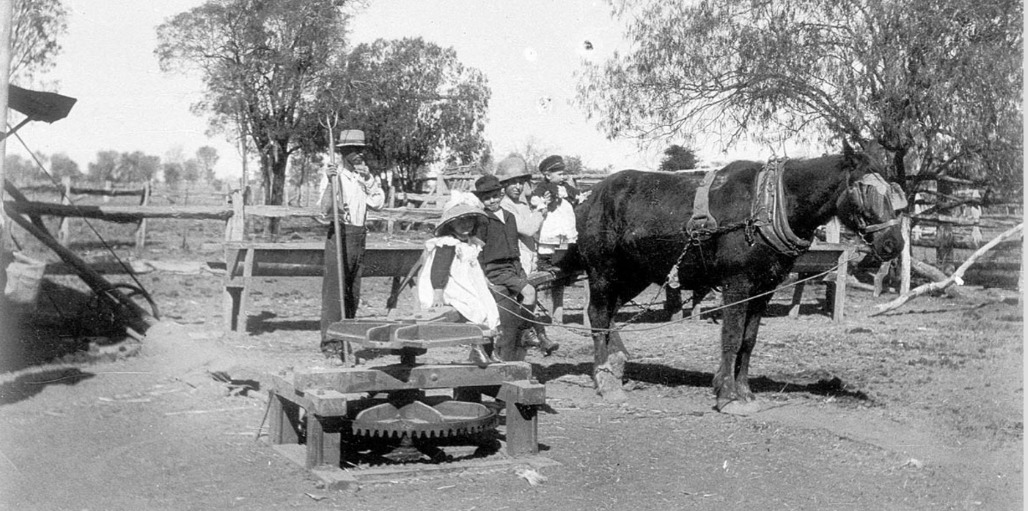
Waler Data Base @ Facebook. Image: Cutting chaff at Euroka using horseworks – Walgett, NSW. c. 1905. State Library NSW
Horseworks, also called a whim, were a mechanical device powered by horses walking in a circle around it. Used to cut chaff, shell corn (maize), pump water, thresh (separate grain from stalks) and various other jobs. Another way of operating them was by a horse on a treadmill.
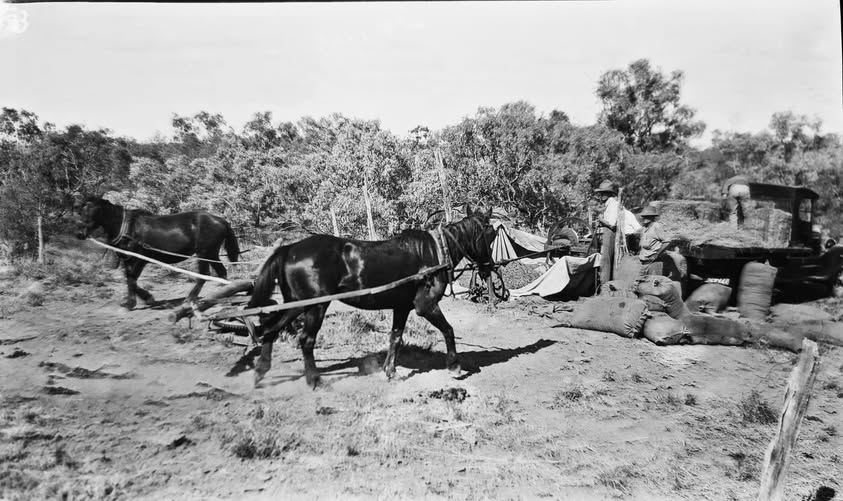
Thanks very much to Mick Watts for this photo from his private collection: Chaff cutting at Harrogate Stn. (near Maxwelton), Qld during the 1920s. Photo by A B Watts. Uncut chaff is on the truck and cut chaff is in the bags.
They came in different sizes, a small one powered by a pony or small horse was used for separating milk (milk and cream separated), churning butter, cutting chaff etc.
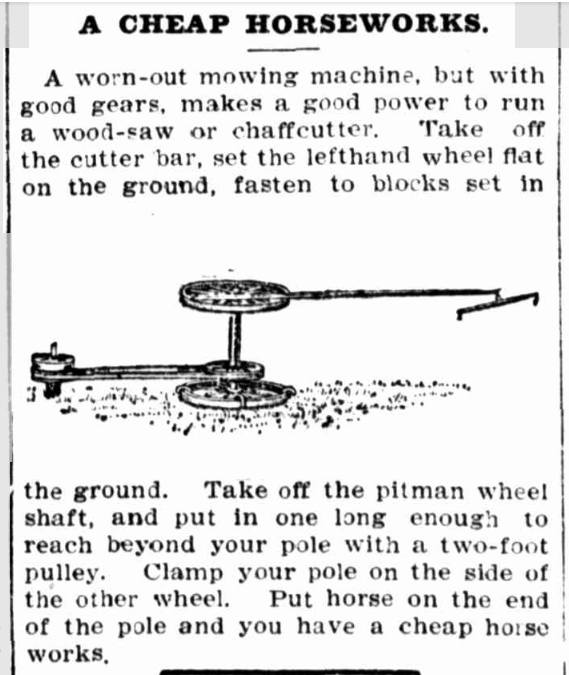
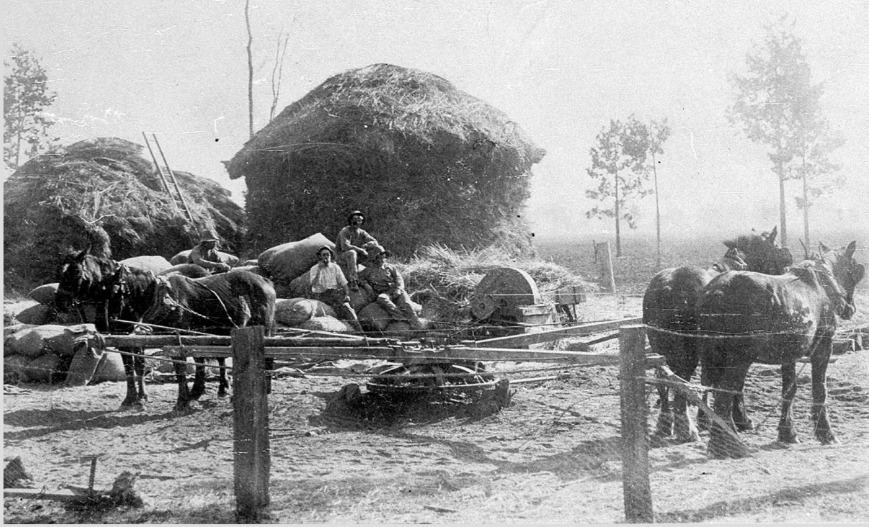
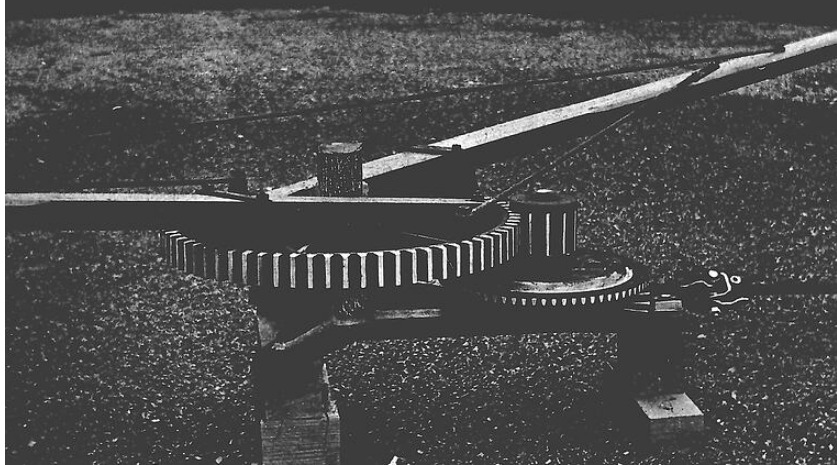
Images: Cobar Herald (NSW), 30th August 1907; Cutting chaff with horse works at Meacham’s. Trungley Road – Temora, NSW, c. 1912 State Library NSW; Detail of Geared Horseworks, Shepparton, Victoria, circa 1910. Museums Vic.
Next size up powered by two horses also cut chaff, and used for winnowing machine, threshing machine (I think threshing and winnowing do the same job just different terms) etc. They were called a two pole or four pole horseworks, being for two or four horses. Horseworks were also used in mining.
The Clyde Engineering Co. Ltd of Granville NSW made many that were widely used here. A large bevel gear at the base of the machine turned a smaller one on a take-off shaft, over which horses stepped (it was usually covered) as they walked in a circle. The shaft, with universal joints, went to the device needing power e.g. chaff cutter.
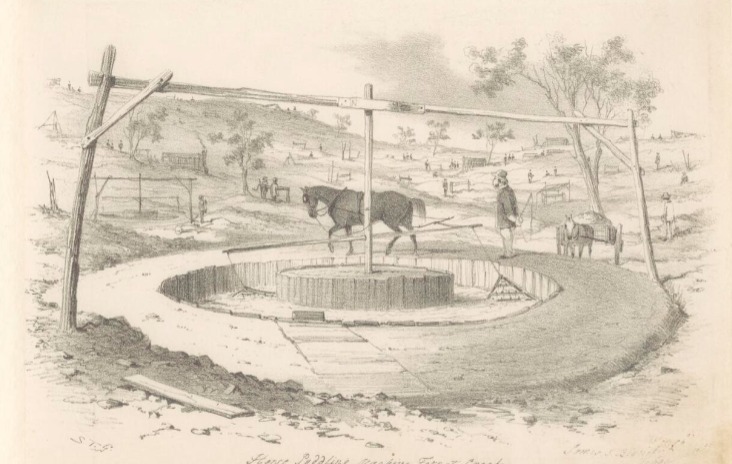
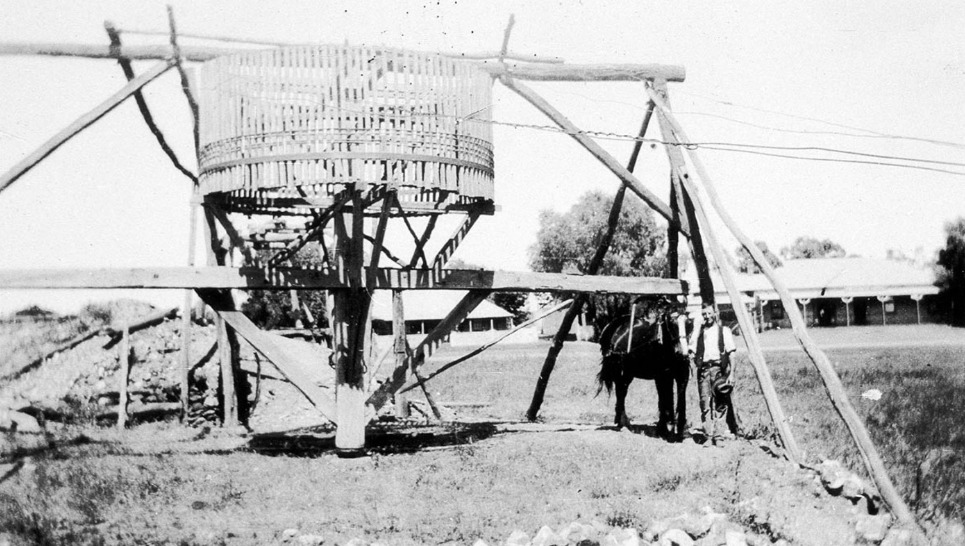

Images: Horse puddling machine, Forest Creek. published 1855. By Samuel T. Gill. National Museum of Australia; Sebastopol Gold Mine – Temora, NSW. c. 1920. State Library NSW; Puddling Machine used in Gold Mining. Photograph included in book “Victoria: Gold and Minerals” issued by Mines Department Victoria, 1935. Victorian Collections
‘”Lilyfield” property belonging to Hermann Krause. A cyclone in 1923 severly damaged the chaff shed. The horse drove a horsework that supplied power to the chaff cutter in shed. Also used to supply power to a sawbench – Jindera, NSW.’
State Library NSW
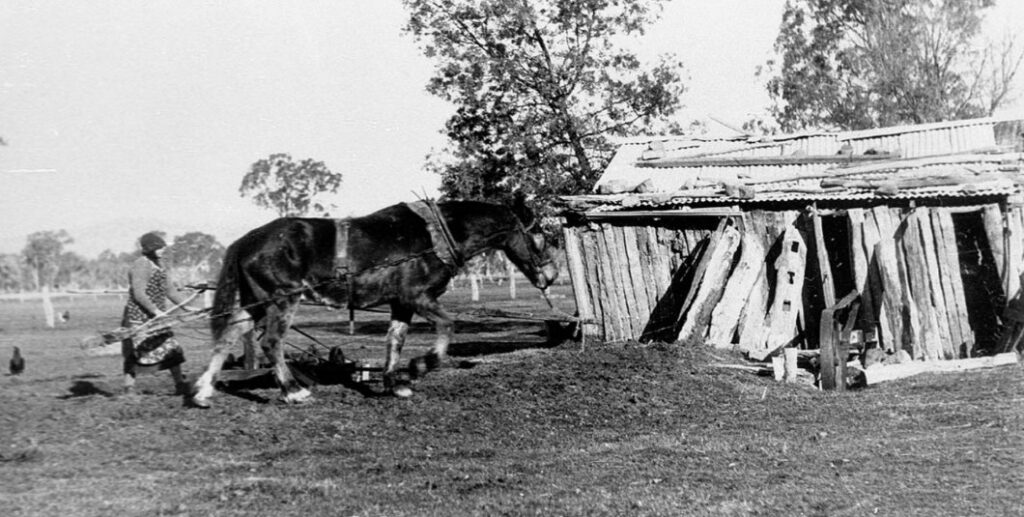
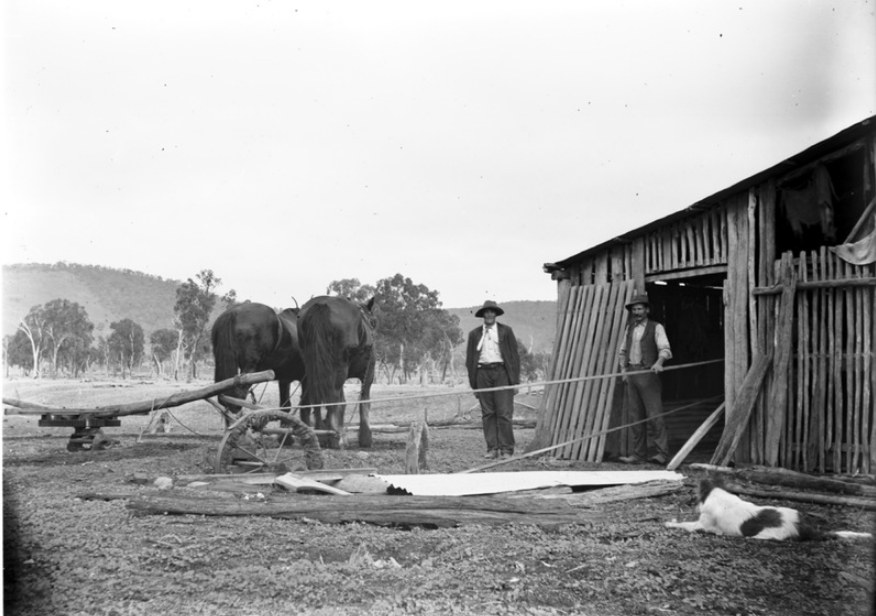
‘Mine workings at Kapunda showing men at work, others having a break. The newly installed horse whim can be seen in the background…. [On back of photograph] Kapunda Copper Mine / March 1845 / from a lithograph by George French Angas.’
State Library S.A.
!['Mine workings at Kapunda showing men at work, others having a break. The newly installed horse whim can be seen in the background.... [On back of photograph] 'Kapunda Copper Mine / March 1845 / from a lithograph by George French Angas. State Library S.A.](https://walerdatabase.online/wp-content/uploads/2024/11/Kapunda-gold-mine.jpg)

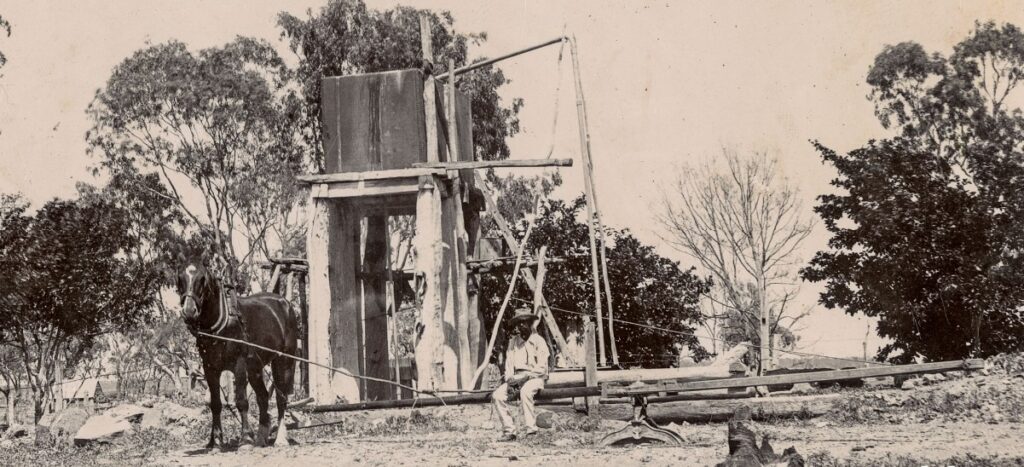
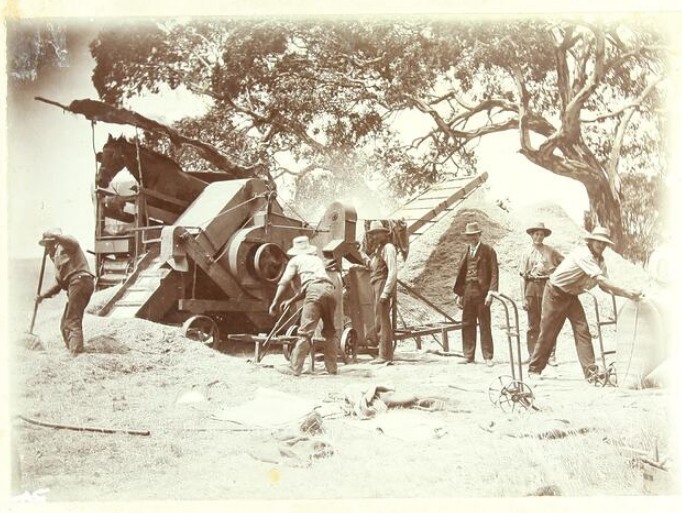
Images: Three children with a calf on Chisholm ‘s farm, Berrimal, near St Arnaud. There is a four-pole horseworks behind the calf and a woman apparently adjusting something in the background. Berrimull District, Victoria, 1918. Museums Vic; Horse being used to operate a water pump for supplying the Mount Emu Plains homestead, 1903. Photo by Wilson Murray, State Library Qld; Processing a wheat crop, using a horse treadmill operating a winnowing machine that is processing a cereal crop, circa 1900. Malle area of South Australia. Museums Vic
Yet more powerful ones were powered by four horses. John Buncle ironworks in Melbourne made 13 sizes of horseworks – the largest took eight horses, the smallest was called The Pony. Couldn’t find a pic of the 8 horse one sorry. James Martin & Co engineering in Gawler S.A. made 2, 3 and 4 horse horseworks.
The treadmill type seemed to use only one horse, as far as I can discover.


Images: HORSE -POWERED 4 wheeled timber and steel treadmill used as a power source to drive winnower which removed chaff from grain. Photo by John Bagshaw & Son. Victorian Collections; Buncle’s machinery display at Royal Melbourne Show included a lot of horse works, Western Mail 17th Sept 1904
Horseworks were also called a whim by many, and also horse gears. Some lifting whims were operated by the horse walking forward, mostly used in mines and for lifting water from a well, others by the usual circle. Bullocks were also used at times.
There is a static display of horseworks at Kapunda, SA. The display board provides a great demonstration of how water was lifted from a mine or well. Also, how rocks and earth were lifted to the surface, making a mine shaft. Thanks to Judi Manning for the photos.

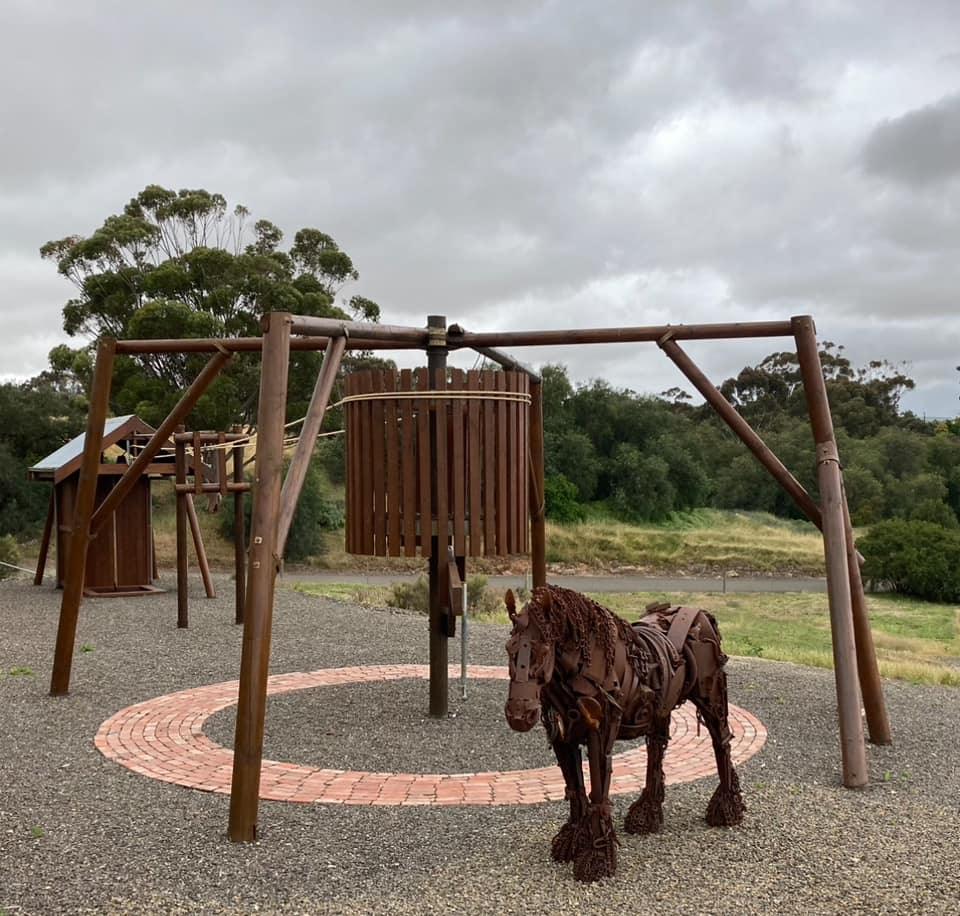
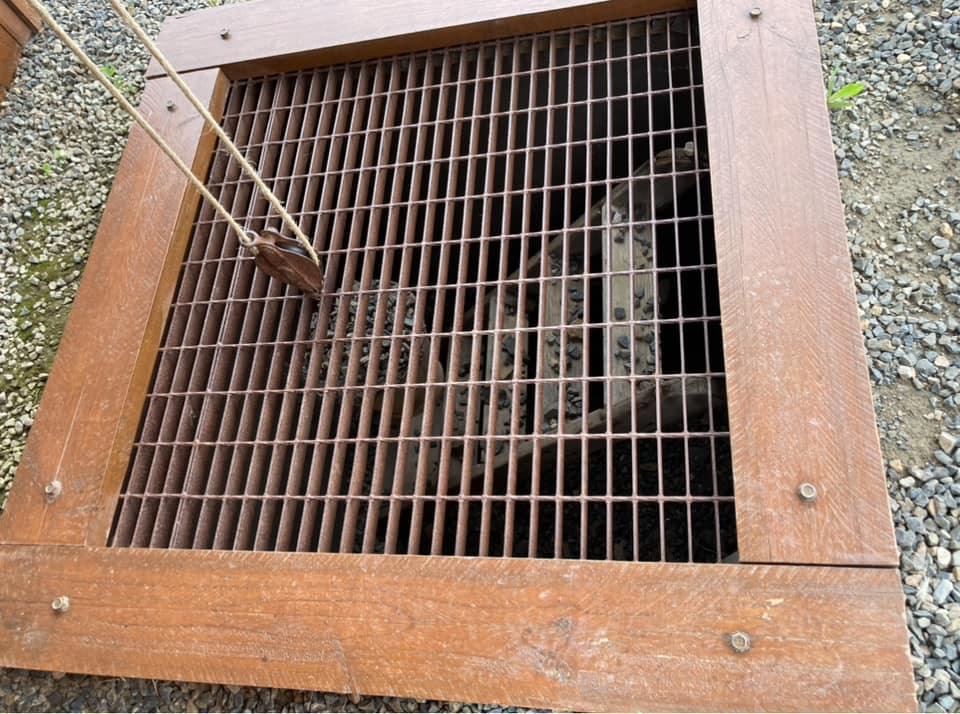
There are horseworks/whims at a few places open to the public. Getting along to draught horse field days is a tremendous opportunity to see equipment and skills.